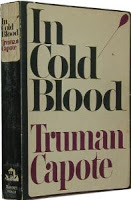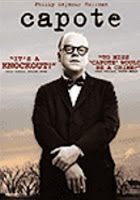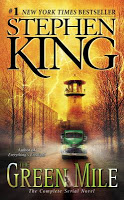 I don’t naturally gravitate toward true crime books. I had, of course, heard of In Cold Blood by Truman Capote, but it was not the sort of book I would normally select for myself. I found Truman Capote through his essays. I read a number of them many years ago and more recently picked up Portraits and Observations: The Essays of Truman Capote. Many of the original essays were also in this collection, but were so enjoyable that I was pleased to re-read them (and I rarely re-read!). Capote was a master observer. He was equally skilled in summing up a location or an individual. He was also a master storyteller with the ability to convey impressions about a person or a place with precision.
I don’t naturally gravitate toward true crime books. I had, of course, heard of In Cold Blood by Truman Capote, but it was not the sort of book I would normally select for myself. I found Truman Capote through his essays. I read a number of them many years ago and more recently picked up Portraits and Observations: The Essays of Truman Capote. Many of the original essays were also in this collection, but were so enjoyable that I was pleased to re-read them (and I rarely re-read!). Capote was a master observer. He was equally skilled in summing up a location or an individual. He was also a master storyteller with the ability to convey impressions about a person or a place with precision.
 I was drawn to In Cold Blood after watching Capote starring Philip Seymour Hoffman. The movie depicted the turmoil Capote suffered while researching and writing this book. His acutely observes the contrast between the idyllic 1950’s god-fearing farm family and the drifters who coldly plan this brutal crime. It is 1959 in Kansas farm country and Dick Hickock and Perry Smith mistakenly believe that there is tens of thousands of dollars stashed on the Clutter Farm. When they fail to find this money, they murder the family one-by-one and take off with a few dollars and a few household items. They leave a trail of clues behind them and before long are captured.
I was drawn to In Cold Blood after watching Capote starring Philip Seymour Hoffman. The movie depicted the turmoil Capote suffered while researching and writing this book. His acutely observes the contrast between the idyllic 1950’s god-fearing farm family and the drifters who coldly plan this brutal crime. It is 1959 in Kansas farm country and Dick Hickock and Perry Smith mistakenly believe that there is tens of thousands of dollars stashed on the Clutter Farm. When they fail to find this money, they murder the family one-by-one and take off with a few dollars and a few household items. They leave a trail of clues behind them and before long are captured.
Capote read about this story in the New York Times and was intrigued enough to take it on as a project. Once the men were tried and convicted, he embarked on extensive interviews with the murderers. This was a unique perspective for crime writing. Capote had the ability to relay their conversations verbatim and to capture their tone in print. He developed an special affinity with Perry Smith and portrayed him as sensitive and guilt-ridden. The men asked that he be present at their execution and it was to have a lasting effect on Capote’s life.
In Cold Blood instantly became the touchstone for crime writing. Readers looking for an exciting suspenseful story or who are interested in the inner motivation of violent personalities would enjoy this book.
 Another provocative book which deals with moral and social issues is The Executioner’s Song by Norman Mailer. Sometimes classified as fiction and sometimes as non-fiction, Executioner’s Song, like In Cold Blood, has a novel-like feel with the author imagining the thoughts and motivation of his “characters”. Mailer’s subject is Gary Gilmore, habitual criminal and double murderer. Gilmore found his place is pop culture both with his firm acceptance of his punishment and his final words “Let’s do it.” The Executioner’s Song won the 1980 Pulitzer Prize for fiction.
Another provocative book which deals with moral and social issues is The Executioner’s Song by Norman Mailer. Sometimes classified as fiction and sometimes as non-fiction, Executioner’s Song, like In Cold Blood, has a novel-like feel with the author imagining the thoughts and motivation of his “characters”. Mailer’s subject is Gary Gilmore, habitual criminal and double murderer. Gilmore found his place is pop culture both with his firm acceptance of his punishment and his final words “Let’s do it.” The Executioner’s Song won the 1980 Pulitzer Prize for fiction.
 Capital punishment is a difficult issue to read about and come to terms with. There is no shortage of fictional accounts of death row inmates, but perhaps one of the more moving stories is The Green Mile by Stephen King. John Coffey, a convicted murderer and a death row inmate, incongruously displays empathetic and healing abilities. Death row is inhabited by both the guilty and the innocent, just as the guards are both kind and cruel. Coffey is an almost holy figure who is able to rise above the cruelty around him.
Capital punishment is a difficult issue to read about and come to terms with. There is no shortage of fictional accounts of death row inmates, but perhaps one of the more moving stories is The Green Mile by Stephen King. John Coffey, a convicted murderer and a death row inmate, incongruously displays empathetic and healing abilities. Death row is inhabited by both the guilty and the innocent, just as the guards are both kind and cruel. Coffey is an almost holy figure who is able to rise above the cruelty around him.



